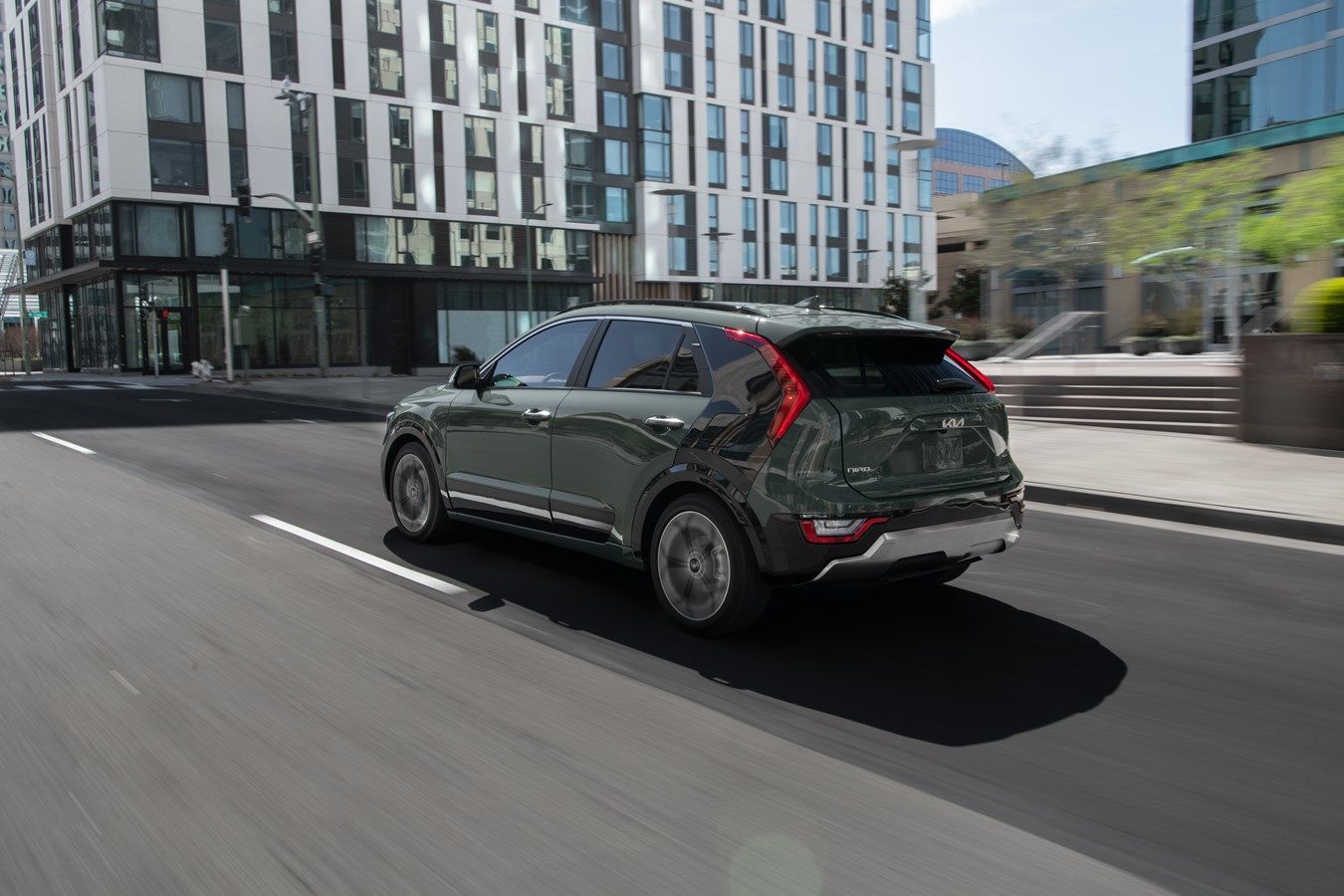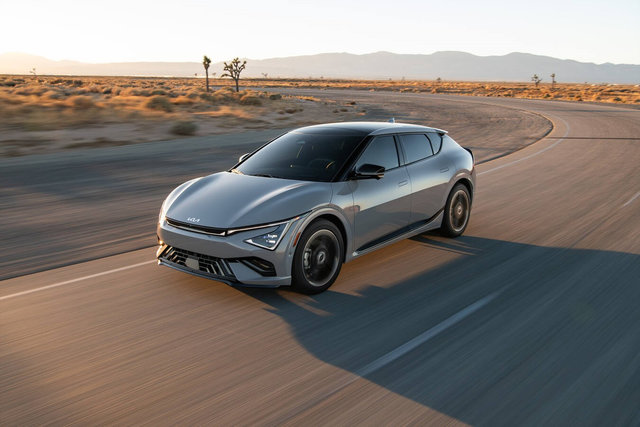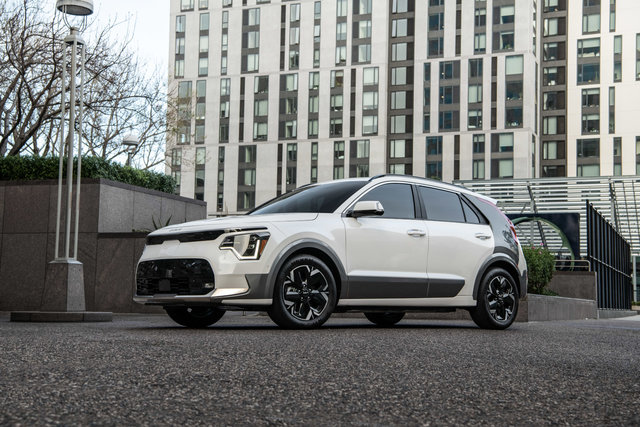Anyone who regularly navigates the Greater Toronto Area knows the particular challenges of its traffic patterns. From the stop-and-go congestion of the DVP during rush hour to the slow crawl along the Gardiner Expressway, GTA commuting tests both your patience and driving skills. For drivers of modern Kia vehicles like the 2025 EV9, these daily traffic challenges are significantly reduced thanks to advanced driver assistance systems designed specifically for congested driving conditions.
Smart Cruise Control with Stop & Go: Beyond Basic Cruise Control
Traditional cruise control becomes essentially useless in heavy traffic, but Kia's Smart Cruise Control (SCC) with Stop & Go functionality transforms how you handle congested roadways. This advanced system uses front-mounted radar to maintain a preset distance from vehicles ahead, automatically adjusting your speed to match traffic flow.
The "Stop & Go" component proves particularly valuable on routes like the 401 across Toronto, where traffic often alternates between complete stops and slow movement. The system can bring your vehicle to a complete stop when traffic halts, then automatically resume forward movement when traffic begins flowing again—all without driver intervention on the accelerator or brake.
For eastbound Gardiner commuters merging onto the DVP north, this feature handles the frequent slowdowns and accelerations that make this interchange particularly stressful. The system maintains consistent following distances regardless of speed changes, reducing the mental fatigue associated with constant brake and accelerator adjustments.
Lane Following Assist: Staying Centered When It Matters Most
Lane Following Assist (LFA) works in concert with Smart Cruise Control to reduce lateral steering workload during congested driving. The system uses camera technology to recognize lane markings and keeps your vehicle centered between them with subtle steering adjustments.
This proves especially valuable in construction zones common throughout the GTA, where narrowed lanes require heightened steering precision. Areas like the perpetual construction zones near Highway 400 interchanges become less stressful as LFA helps maintain proper lane positioning even when lane markings are less than ideal.
The system operates at speeds up to 180 km/h but offers perhaps its greatest benefit in slow-moving traffic, where maintaining lane discipline amid distractions becomes challenging. By keeping your vehicle centered automatically, you can focus more on surrounding traffic conditions and less on the constant small steering corrections typically required in congested driving.
The Real-World Benefits for GTA Drivers
The practical advantages of these systems become immediately apparent during specific Toronto driving scenarios:
Lakeshore Boulevard Congestion During events at Exhibition Place or Ontario Place, Lakeshore traffic often crawls for extended periods. With SCC and LFA activated, your Kia handles the tedious speed management and lane positioning automatically, reducing fatigue during these slow-moving situations.
Highway 401 Collector/Express Transfers One of the most challenging aspects of 401 travel involves navigating transitions between collector and express lanes. With variable speeds and frequent merging, LFA helps maintain proper lane positioning while SCC adjusts speed appropriately for surrounding traffic conditions.
Don Valley Parkway Rush Hour The DVP's winding nature combined with its heavy traffic volume creates a particularly demanding driving environment. LFA helps navigate the curves while maintaining lane position, and SCC manages the frequent speed changes that characterize this notoriously congested route.
Allen Road Transit The limited-access portion of Allen Road features frequent stops and starts during peak hours. The Stop & Go functionality proves especially valuable here, handling the repetitive braking and acceleration that makes this stretch mentally taxing.
How These Systems Work Together
While each system functions independently when needed, they deliver their maximum benefit when working in tandem. Activating both features simultaneously creates a semi-automated driving experience specifically calibrated for congested conditions.
The driver remains responsible for overall vehicle operation and must keep hands on the steering wheel, but the mental workload decreases significantly. The systems handle the moment-to-moment adjustments that make traffic driving particularly fatiguing, essentially managing the "micro-tasks" of driving while you manage the macro decision-making.
Activating and Using These Features
In Kia vehicles like the 2025 EV9, both systems activate with intuitive controls:
- For Smart Cruise Control, press the dedicated cruise button on the steering wheel, set your desired maximum speed, and adjust following distance using the distance button.
- For Lane Following Assist, press the LFA button on the steering wheel. The system status appears in the instrument cluster with lane markings illuminated to confirm activation.
- For full traffic assistance, activate both systems when entering congested areas. The vehicle will maintain lane position while adjusting speed according to surrounding traffic.
It's worth noting that these systems do require visible lane markings for optimal LFA performance, though the technology has improved significantly in recognizing even worn or partially obscured markings common on Toronto's busiest routes.
Beyond Convenience: The Safety Factor
While the convenience aspects of these systems immediately improve your daily commute, the safety benefits deserve equal attention. Driver fatigue increases significantly during congested driving, potentially leading to delayed reactions or decreased attention.
By reducing the constant physical and mental adjustments required in traffic, these systems help maintain driver alertness for when critical decisions are needed. They create a buffer against the fatigue-induced errors that often contribute to the fender-benders and rear-end collisions common in GTA traffic.
Experience the Difference
The true value of Smart Cruise Control with Stop & Go and Lane Following Assist becomes apparent once you experience them in familiar traffic conditions. The systems adapt to your driving style while maintaining safety parameters, creating a noticeably less stressful commuting experience.
Visit Plaza Kia to test these features on your regular commuting routes. We will show you how to fully leverage these technologies to address your unique driving challenges and enhance your daily travel experience in GTA.
To learn more about Kia driver assistance technologies, visit Kia.ca








